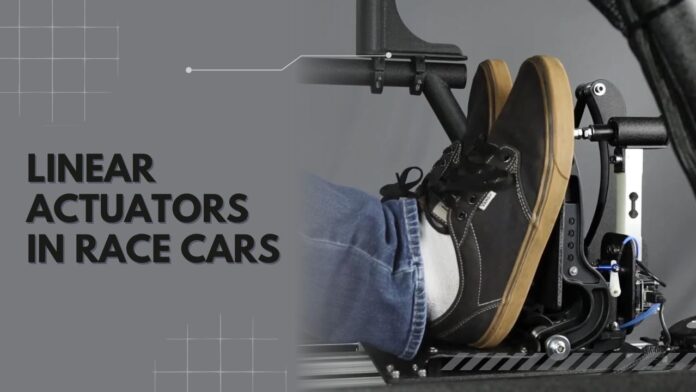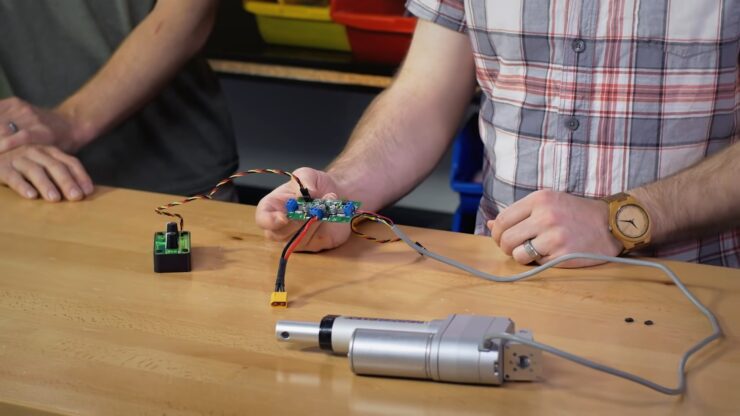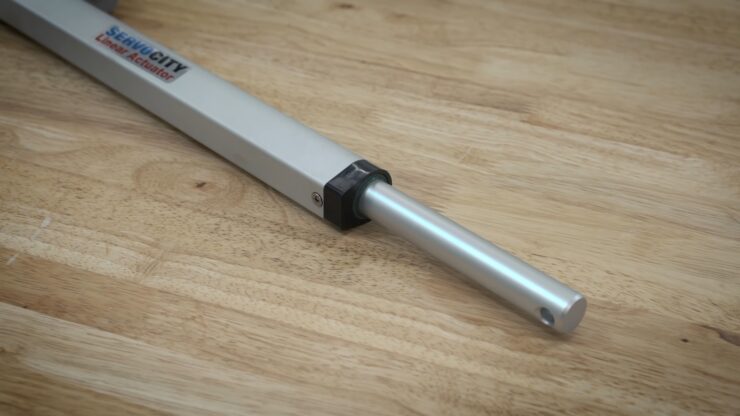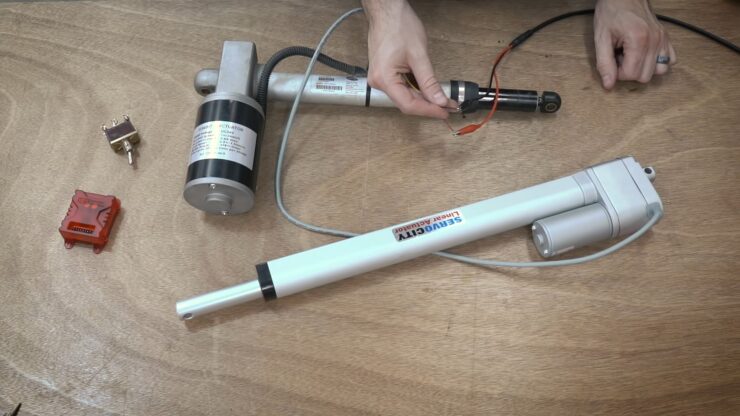
Are you a mechanic, racing car driver, or enthusiast? You have most likely seen a linear actuator in action. Many race cars depend on linear actuators for top performances, as they help convert specific rotational motion to linear motion. They are mostly found in the brake and suspension systems of automobiles.
As you read, you learn about the many types of linear actuators frequently utilized in race vehicles. You also discover how they improve your vehicles’ efficiency and safety. In the end, you’ll understand how to give your race vehicle an edge over others. So let’s get started!
Linear Actuator Types Used in Race Cars
Electric Linear Actuators
First up, there are the electric linear actuators. These actuator types use electric motors to convert electrical energy into linear motion. They’re popular for their high precision and accuracy, making them perfect for controlling small and precise movements. In race cars, electric linear actuators are often used for suspension adjustments and controlling aerodynamic elements like wing angles.
Hydraulic Linear Actuators
Next, pressurized fluid is used by the hydraulic linear actuators to create linear motion. They are popular for producing a lot of power. This makes them perfect for demanding tasks like lifting and moving heavy things. Hydraulic linear actuators are very useful in racing cars for the suspension’s ride height and damping. The steering and braking systems are not left out too.
Pneumatic Linear Actuators
These actuators provide linear motion using compressed air. They are important in numerous industries because of their quick reaction times and minimal maintenance needs. Pneumatic linear actuators enable racing vehicles to make rapid modifications to the suspension and braking systems.
Each variety has special benefits and uses of its own. The best option will ultimately rely on the requirements of the driver and the vehicle.
Where to find linear actuators in race cars
Linear actuators are an essential component of many race car systems, and they play a vital role in enhancing performance and safety.
Race Car Suspension Systems
In racing cars, the suspension system is one of the locations where linear actuators are most often found. The suspension system is in charge of ensuring a comfortable ride and perpetual wheel-to-road contact. Linear actuators help adjust the ride height. They also dampen the suspension to provide optimal performance in different driving conditions.
Steering Systems
Linear actuators are also useful in race car steering systems. Steering systems are responsible for controlling the direction of the vehicle. The linear actuators help to adjust the steering angle. Therefore, it provides precise control over the vehicle’s movements.
Braking Systems
Another use for linear actuators in racing vehicles is braking systems. You may adjust the bias of the brakes using linear actuators. This system, in turn, regulates how much braking power to utilize in the front and back wheels. The driver may also adjust the braking system’s settings to enhance performance and avoid wheel lock-up.
In addition to these technologies, racing vehicles also use linear actuators in a variety of other places. These include air intake systems and aerodynamic components like wing angles.
Performance enhancement with linear actuators
Linear actuators are a key component in many race car systems. They have several advantages that lead to improved performance on the track including:
A. Improved Handling
Linear actuators help to adjust the ride height and dampening of the suspension. Therefore, it gives the car better handling in different driving conditions. This means the car can corner faster and with more stability. The result? Faster lap times and a more competitive edge.
B. Better Control and Stability
In addition, linear actuators provide improved stability and control, particularly in high-speed scenarios. Linear actuators enable drivers to always remain in control of the automobile, even in difficult racing situations. They do this by altering the steering angle and offering precise control over the vehicle’s motions. Therefore, it results in better lap times and more reliable performance on the track.
C. Faster Acceleration and Deceleration
Finally, linear actuators contribute to faster acceleration and deceleration. It does this by adjusting the brake bias and optimizing the distribution of braking force. In turn, it affects the lap timings as even the tiniest gains in acceleration and deceleration have an effect. This feature often determines whether you win or lose a race.
Safety Enhancement with Linear Actuators
Safety is a top priority in any racing environment. Linear actuators help to improve several key areas of race car safety.
A. Reduced Risk of Accidents
The ability of linear actuators to damper the suspension and modify ride height is a notable feature. This quality aids in ensuring constant wheel-to-road contact. That means you experience improved stability and traction. As a result, drivers are able to keep their cars under control in adverse racing circumstances.
B. Improved Driver Visibility
Linear actuators are essential for safe racing. This is because they enable adjusting the angle of the rearview mirrors and other critical components. Hence, they help drivers see more of their surroundings. In the process, it reduces blind spots which makes avoiding collisions easier.
C. Enhanced Braking Performance
The braking performance is a critical safety feature in any race car. With the aid of linear actuators, it is possible to adjust the brake bias and optimize the distribution of braking force. These help race cars stop faster and more effectively. Often, it is the difference between a close call and a serious accident.
Case study: Linear Actuators in a Race Car Suspension System
Let’s take a look at a case study on how linear actuators apply in a race car suspension system.
Description of the Case Study
In this case study, a race car team wanted to improve their car’s handling and stability on the track. They decided to employ linear actuators in their suspension system. This would allow for real-time adjustments to the ride height and dampening.
Results of the Case Study
After using the linear actuators in their suspension system, the race car team saw significant improvements. These improvements were visible in their lap times and overall performance on the track. The car’s handling and stability improved also. As a result, the driver could make more precise, fast turns.
The crew also saw a decrease in the likelihood of road crashes. The wheels were always in touch with the ground because of the effectiveness of the linear actuators.
Lessons Learned from the Case Study
Linear actuators allow for real-time adjustments to the ride height and dampening of race cars. In general, linear actuators make significant improvements in handling, stability, and safety.
Conclusion
From improving performance to enhancing safety, linear actuators have revolutionized the way race cars operate. With their ability to provide precise movements and adjustments to various systems, linear actuators have become a go-to solution for race car engineers and enthusiasts.
Whether you’re a professional racer or a hobbyist, incorporating linear actuators into your race car can help take your performance and safety to the next level. So why not give it a try and see the difference for yourself? If you’re interested in learning more about linear actuators, check out Firgelli Automations. We cover everything on linear actuators and other automation products.









